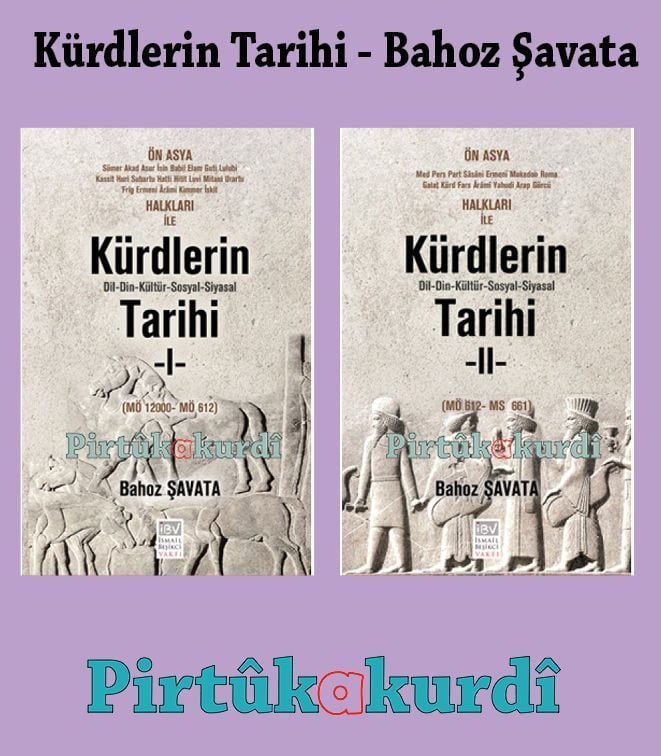
Kürdlerin Tarihi Seti Bahoz Şavata
book 1
The first civilization was formed in the Upper Euphrates and Tigris basin in Asia Minor. The development of the Upper Mesopotamian civilization continued further south over time to Tell-Halaf, from there to Lower Mesopotamia, Sumer, and Egypt, the southern tip of the Fertile Crescent. The development of civilization centered in Asia Minor is due to the climatic living conditions the world experienced after the Ice Age.
Migrations of Aryan communities from the west and east and Semitic communities from the south develop into Mesopotamia. After the migrations, hybrid cultural and ethnic views of the local communities and the Semitic, Caucasian and Aryan peoples who migrated, especially in the Zagros mountain range and the lower Mesopotamian geography, were formed.
Post-Akkadian III. The hybrid civilizations formed by the Ur (Guti) Dynasty and the "Assyrian Trade Colonies" that developed with Late Assyria extend again via the Upper Euphrates and Tigris, from the Eastern Mediterranean coasts to Antolia, to Europe, through the Diyala and Masala passes to the Iranian plateau, and via Sus to India. .
The ancestors of the Aryan communities, especially the Greeks and Kurds, who appeared in Near East Asia after 23 centuries BC, became the pioneers of many political formations and new civilizations in the Near East lands to which they migrated.
The book in your hand tries to tell you the civil and political adventure of the Semitic, Caucasian and Aryan people of the region with historical documents and a more realistic face.
book 2
The Asian ancestors of the Kurds are Med, Persian, Parthian, Sogdian, etc. with Eastern Aryan culture. The homeland of the communities is in the northeast of Khorasan, Iran, Khwarezm, Bactira and Sogdia etc. is seen as. The first settlement areas of these Eastern Aryan tribes in the west, after 23 centuries BC, were Elbrus and the Zagros Mountains on the Iranian plateau. Their appearance further west is understood by the presence of the same cultured Mitanni tribes in the Upper Euphrates and Tigris basins, where they migrated to Cappadocia and Cilicia.
After the 9th century BC, Eastern Aryan communities in Iran were settled in Upper Mesopotamia as slaves in the military campaigns of the powerful slave-owning Assyrian and Urartu states of the region. These communities merged with the Mitanni remnant and local Caucasian cultured Hurrian noble communities, who were probably their kinsmen, in the Zagros and the Upper Euphrates, Tigris and Masala river basins. They created the Kurdish nation in this geography. The lands where Kurds lived became known as "Media" after Alexander the Great. Kurds developed as a political power in the Media lands where the " Adiabene , Karduk and Atrapone Media" states were dominated by Rome, which turned to Asia Minor after the 1st century BC and supported them as a buffer state against the powerful Parthian State of the region. However, the Roman-Parthian and Byzantine-Sasanian period was a period in which Media, the country of the Kurds, experienced intense sharing wars.
The adoption of Christianity by the people of the region, the Arameans, Armenians and Greeks, and the religious polarizations that developed among the peoples of Media in the 330s AD clarified the existing ethnic structures. In this turmoil, the Islamic Armies, which represent the Islamic religion developing in Arabia, took the Media under control. Zoroastrianism etc. Kurds, who were forced to abandon their religion and embrace Islam, were left alone with the disadvantages of the internal and terrestrial geography of their country Media after 650 AD.
| Publisher | : | İsmail Beşikçi Foundation Publications |
| Publication Year | : | 2015 |
| The heart | : | Turkish |


